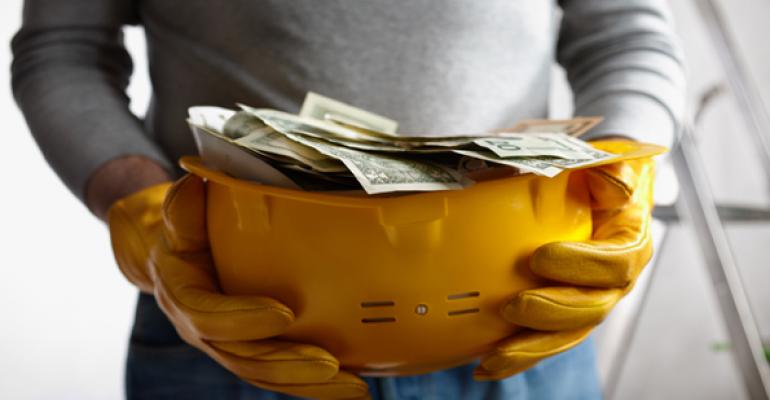Crowdfunding websites are becoming an important piece of the real estate financing puzzle, especially for apartment developers who need a little extra debt or equity to complete their plans.
“Certainly from where they started, the growth of these crowdfunding portals seems exponential,” says Lee Weaver, senior vice president for Northmarq Capital, a commercial real estate debt and equity provider.
A growing number of developers are using crowdfunding to help build or renovate apartment properties. That’s partly because traditional banks are less eager to lend as financial reform regulations finally come into action.
“It is working now and it’s just going to get bigger and bigger and bigger,” says Markley Roderick, a partner with the law firm of Flaster/Greenberg.
Construction cash shortage
Some of the busiest construction lenders and slowing down their business.
“Construction financing is getting much more challenging,” says Doug Opalka, senior managing director with HFF, a financial intermediary. Some lender are offering smaller loans for new construction projects. Others are less likely to lend at all.
Regulations created after the global financial crisis force banks to kept cash in reserve to offset the risk of investments like construction loans. The rules are now finally being enforced, after years of uncertainty over how they would be put into action, notes Opalka. Many banks have already lent as much as they can without putting more cash on reserve.
“Multifamily real estate is a very common property type for crowdfunding… Real estate continues to represent somewhere north of 90 percent of crowdfunding,” say Roderick. Apartment properties provide steady cash flow and stability. Also, rental housing is a type of real estate many crowdfunding investors are already familiar with.
Apartment development still seems like a relatively safe bet, compared to other investment options. Even though developers are opening hundreds of thousands of new apartments, strong demand seems likely to fill the new units in most markets. The percentage of vacant apartments nationwide is still far below 5.0 percent, even if that percentage is growing slightly. Rents continue to grow at a healthy rate in most markets, according to data firms including Reis Inc., and MPF Research.
Most crowdfunding websites still provide loans for new apartment projects. The products range from permanent loans to smaller, mezzanine loans, or preferred equity.
“Debt is much more popular,” says Roderick. “It feels safer… In an equity investment, there is no liquidity. An investor might have to hold this thing forever.”
Crowdfunding services like RealtyMogul.com, one of the first real estate crowdfunding ventures, still mostly provide short-term loans for “fix-and-flip” investments. Often 60 or 70 investors might contribute to a single loan ranging from a half million to several million dollars. The loans typically cover up to 65 percent of the anticipated value of the property after it is renovated. The investor typically receives an 8.0 to 10.0 percent yield, says Roderick.
Crowdfunding also provides equity investments through websites including Fundrise. These equity investments work a lot like private equity funds. Crowdfunding equity investors receive a “preferential return” of 7.0 percent to 8.0 percent from any profits produced by the property. Any profits left after the investors have received their preferential return are split between the investor and the sponsors.
“I have large developer clients who are tired of dealing with hedge fund managers,” says Roderick. “They can get less expensive money from crowdfunding. A private equity fund might have charged 10.0 or 11.0 percent. The crowd might charge 7.0 or 8.0 percent, and that's a big difference.”

